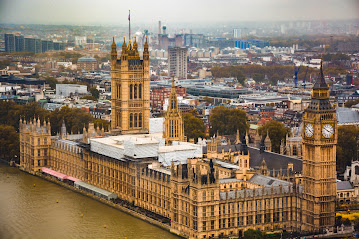Quirks and Traditions of the UK Parliament: The Mace and Black Rod
Step into the grand chamber of the UK Parliament, where a fascinating clash of symbols unfolds—enter the Mace and the Black Rod. These captivating objects embody power, authority, and the intricate dynamics between the House of Commons and the House of Lords.
The Mace: A Symbol of Royal Authority
Imagine the Mace, a majestic symbol resting prominently on the Table within the House of Commons. Crafted from silver and gilded with gold, this ornate and weighty object represents the royal authority bestowed upon the elected representatives. When the Mace is positioned on the Table, it signifies that the House of Commons is in session, ready to exercise its legislative powers. It serves as a powerful reminder that the Monarch's consent accompanies the democratic decisions made by those who represent the people.
The Black Rod: A Symbol of Parliamentary Independence
Now, let's turn our attention to the enigmatic Black Rod, a figure wrapped in tradition and symbolism. Picture the Gentleman Usher of the Black Rod, holding a staff made of ebony crowned with gold. Clad in traditional attire, this distinguished figure plays a significant role during the State Opening of Parliament—a truly captivating ritual. The Gentleman Usher's task is to summon the members of the House of Commons to join the House of Lords for the grand occasion of the Queen's Speech. This act symbolises the Monarch's authority and underscores the unity of the Houses of Parliament.
The Clash of Symbols
However, there's a fascinating twist to this tradition. As the Gentleman Usher approaches the doors of the House of Commons, they encounter a closed door—a symbol of the chamber's independence and privilege. Three resounding knocks from the Black Rod against the door follow as if seeking admission. This symbolic act represents the House of Commons unwavering autonomy and its determination to resist undue external influence.
Once granted entry, the Gentleman Usher delivers the summons, inviting Members of Parliament to join the Sovereign in the House of Lords. This ceremonial procession serves as a powerful reminder of the interconnectedness of the monarchy, the House of Lords, and the House of Commons—the three pillars that define the UK Parliament.
The clash of symbols—the Mace and the Black Rod—sets the stage for parliamentary proceedings, portraying the delicate balance of power and the distinct roles played by each chamber. These symbols not only serve as reminders of the historical foundations of the UK Parliament but also infuse its halls with a sense of grandeur and tradition.
The UK Parliament: A Living Embodiment of History, Authority, and Democracy
So, the next time you conjure the image of the Mace resting on the Table or envision the Gentleman Usher of the Black Rod embarking on their ceremonial journey, reflect on the profound symbolism they carry. They represent the authority vested in the UK Parliament, the intricate relationship between the monarchy and the elected representatives, and the enduring legacy of democratic governance.
As we immerse ourselves in the rich tapestry of parliamentary traditions, we recognise that these symbols, with their clash and harmony, contribute to the distinctive and captivating essence of the UK Parliament—a living embodiment of history, authority, and the democratic process.
Spec.




Comments
Post a Comment